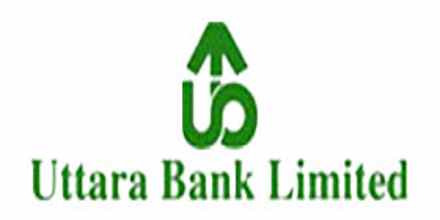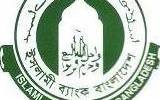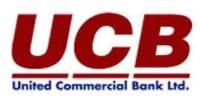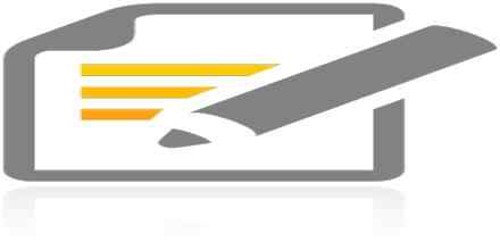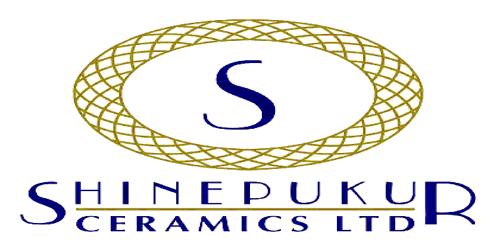The main objective of this report is to analysis Overall Banking in Uttara Bank Limited. General objectives of this reports are to complete the internship and to work in a business organization for three months to acquire practical knowledge about real Business operation. Finally this report make swot analysis Overall Banking in Uttara Bank Limited.
Introduction:
Achievement of high economic growth is the basic principles of present economic policy. In achieving the objectives, the banking sector plays an important role. The banking sectors channel resources through deposit mobilization and providing credit for different business venture. The successful running of a bank business depends upon how effectively the credit management recovered the funds.
Uttara Bank Limited is always ready to maintain the highest the quality services by upgrading Banking technology prudence in manage and applying high standard of business ethics through its established commitment and heritage. Objectives of a private institution like UBL are to maximize profit through optimum utilization of resources by providing best customer’s service.
Objective of the Report:
General objective of the report:
The general objective of this report is to complete the internship. As per requirement of MBA program of Stamford University Bangladesh, one student needs to work in a business organization for three months to acquire practical knowledge about real Business operation.
Specific Objective of the report:
Scope of the Report:
As I was working in Uttara Bank, Moghbazar Branch, I got the opportunity to learn different part of banking system. The supervisor divided the whole banking system in three parts; as a result I got the opportunity to work in all the three divisions (General Banking Division).
AN OVERVIEW OF UTTARA BANK LIMITED
History and Background
Banking system occupies an important place in a nation’s economy. A banking institution is indispensable in modern society. It plays a liberalization of economic policies in Bangladesh. Uttata Bank Limited emerged as a private bank in the year 1965 in a Dhaka. At that time its name was Eastern banking Corporation. It was Nationalized 1972. Then again it was denationalized in the year 1984. Now it has 207 branches through out the country.
Mission of UBL
Uttara Bank Limited aims to become one of the leading Banks in Bangladesh by prudence, flair and quality of operations in their banking sector. The bank has some mission to achieve the organizational goals. Some of them are as follows as:
- Uttara Bank Limited provides high quality financial services to strengthen the well being and success of individual, industries and business communities.
- Its aim to ensure their competitive advantages by upgrading banking technology and information system.
- UBL intends to play more important role in economic development of Bangladesh and its financial relations with the rest of the world by interlining both modernistic and international operations.
- The bank believes in strong capitalization.
- It maintains high standard of corporate and business ethics.
- Uttara Bank Limited extends highest quality of services, which attracts the customers to choose them first.
- The Bank creates wealth for the shareholders.
- The bank maintains congenial atmosphere for which people are proud and eager to world with Uttara Bank Limited.
- The Bank intends to meet the needs of their clients and their profitability by creating corporate culture.
Objectives &Goals of UBL
- The objectives of UBL is not only to earn profit but also to keep the social commitment and to ensure its co-operation to the person of all level, to the businessman, industrialist-specially who are engaged in establishing large scale industry by consortium and the agro-based export oriented medium and small scale industries by self inspiration.
- UBL is always ready to maintain the quality of services by upgrading banking technology prudence in management and by applying high standard of business ethic through its established commitment and heritage.
- UBL is committed to ensure its contribution to national economy by increasing its profitability through professional and disciplined growth strategy for its customer and by creating corporate culture in international banking arena.
Specific Objectives Of UBL
Uttara Bank limited has 31 specific objectives according to its memorandum. The most important objectives are-
- To carry on the business of a bank with such branches or agencies and at such places in Bangladesh and abroad as may form time to time be determined by the directors
- To carry as an agents for the business of banking in all its branches and departments.
- To act as an agents for government or local authorities or for any other person or persons.
- To carry on and transact every kind of guarantee and indemnity business.
- To promote or finance any business undertaking or industry.
- To take or acquire and hold shares, debentures or securities.
- To advance money.
Tools For Appraisal Credit
The C, of Goods and Bad Loan:
In addition to the formal credit appraisal, the credit officers try to judge the possible client based on some other criteria. These criteria are called the C’s of goods and bad loans. The C’s are described below.
- Character: Make sure that the individual or company you are lending to have out standing integrity.
- Capacity: Make sure that the individuals or company are lending to have the capability of repaying your loan.
- Condition: Understanding the business and economic conditions can and will change after the loan is made.
- Capital: Make sure individuals or company you are lending to have an appropriate level pf investment in the company.
- Collateral: Make sure that there is a “second way out” of a credit but do not allow that to drive the credit decision.
- Complacency: Do not rely on past history to continue. Stay alert to what can go wrong in any loan.
- Carelessness: Remember that documentation, follow-up and consistent monitoring is essential to high quality loan portfolios.
- Communication: Share credit objectives and credit decision making both vertically and laterally with in the bank.
- Contingencies: Make sure that you understand the risk; particularly the downside possibilities and that you structure and price the loan consistently with that understanding.
- Competition: Do not get swept away by what others are doing.
GENERAL BANKING
Introduction
General Banking is designed to provide financial service to the general people in saving their money; smoothing transaction for businessman and ensure security of the precious wealth of the client. Under general banking the UBL provides various kinds of accounts.
Account Opening:
UBL Moghbazar Branch main have two types of account for the customers. They are-
Savings Account:
A saving account can be open in own or joint name. In case of joint account, the account can be maintained by the both or any one of them. Not more than one account can be open in same name. Saving account can be transfer from one branch to another. To open a saving account in the bank is required. This account can be used for collection of fund from DD, MT, TT, PO, dividend warrant etc. Interest is given in these accounts. Here minimum deposit is TK.1000. There is some restriction in withdrawal of fund. Account closing charge is TK.100.
Current Account:
Current account can be divided into three-
For Person:
Current account for person can be open by one individual or jointly by more than one individual. Here minimum deposit is 2000. There is no restriction regarding withdrawal of fund. A saving account holder cannot be the introducer for opening of Current account. Citizenship certificate is also needed here. Here account closing charge is TK.100.
For Limited Company:
To open a current account photocopy or registration certificate should submit. List of Board of Directors also be given to the bank. Here the name of person or persons will be given who will maintain the account.
For Private Company:
Here the bank carefully justifies the introducer. Here trade License, Registered partnership deed (in case of partnership business) is required to open an account.
Issuing Cheque Book:
Cheque book is used to withdraw fund from an account. Client is given a Cheque book while opening an account. After finishing a cheque book the client have to fill up the requisition slip to drown a new cheque book. A saving account cheque book contains 10 leaves and a current account cheque books contain either10 or 25 or 50 or 100 leaves. Depending on the use pattern of the client the authorized officers provide cheque books.
Remittance Section:
People need to transfer money from one place to another. Physical fund transfer is risky and time consuming. Banks transfer fund on behalf of customers within short time in a less risky way in exchange of some commission which is known as remittance earning. There are some instruments to transfer fund. The instruments are-
Pay Order:
Pay Order is one kind of unconditional promissory note or instrument that is issued by the bank to the customer. The difference between cheque and pay order is the mode of encashment.
Demand Draft:
Demand Drafts are made for the transfer of money from one place to anther in the form of cheque through a particular Bank. The bank issues DD for their outer district branches.
Telegraphic Transfer:
When a certain amount of money is asked by the client to transfer from one branch to another within a day then bank use phone to transfer fund from one account to another. For TT, there is a particular form. When the form is filled up properly and deposits the amount by the applicant, the authorized officer issued a cost memo to the applicant for their confirmation.
Mail Transfer:
Mail transfer is also used for the same purpose. It is generally used where there is no TT arrangement.
Clearing House:
In the clearing section the work is to clear the cheques, DD’s and PO’s through Bangladesh Bank that are submitted for cash collection. Everyday clearinghouse takes place in Bangladesh Bank, once in the morning called morning house another in the evening called return house. In the house all the Banks representative sit together and exchange their money to their particular accounts.
Inward Clearing:
Those cheques or instrument of UBL which are submitted to other banks for collections, are called in ward clearing.
Outward Clearing:
The cheques of other banks that are submitted to the UBL for collections are called Out-ward clearing.
ADVANCE
Introduction
The word credit comes from the Latin word “credo” meaning “I believe”. It is a lenders trust in persons/ firms/company’s ability or potential ability to command goods or services of another in return for promise to pay such goods or services at some specified time in the future. The making of loans and advances has always been prominent profitable function of bank. Sanctioning credit to customers and others out of the funds at bank Limited made in different forms, such as, loans, overdrafts, Cash, Credits, bills purchased and discounted etc. Uttara Bank Ltd. Deals with the money from the depositor repayable on demand. So, it can not afford to lock up it fund for long periods. UBL usually grant short- term advances, which are utilized to meet the working capital requirements of the borrower.
Overdraft:
When a current account holder is permitted by the banker to draw more than what stands to his credit, such an advance is called an overdraft. The banker may take some collateral security or may grant such advance on the personal security of the borrower. BUL has given this overdraft facility to its clients. Overdraft facilities are generally granted to businessman for expansion of their business, against the securities of stock-in-trade, shares, debenture, Government promissory notes, fixed deposit, and life policies.
Terms and conditions:
- Interest rate is 14% in case of work order. But in case of DPS interest rate is 15%, incase of share, debenture and bond the rate is 13% and incase of FDR the rate should be interest rate on FDR plus 3%.
- Limit of the loan should be according to the sanction latter.
- Maximum loan period is 1 year.
- If the client fail to pay the bank’s due with in due date, the bank may en cash the pledge without prior intimation to client in case of movable property like DPS, FDR, Bond, share, debenture etc.
PAD:
A loan facility provided by the banks to the customers against document/bills, like Bills of Lading, Warehouse keeper’s Certificate/receipts.
Terms and Conditions:
- Maximum limit up to bill value.
- Interest rate was 14.5% in the year 2003 .But now it is 14%.
- Here the loan is given maximum for 7 days.
LTR:
This sort of credit is extended to the importer against trust receipt. The important goods remain in the custody of the importer. He is required to execute a stamped trust receipt in favor of the bank. Moreover, the bank retains collateral security for its safeguard.
Terms and conditions:
- Limit maximum up to L/C value.
- Time period vary from 60 days to 120 days.
- Interest rate is 14% now which was 14.5% in the tear 2003.
LIM:
Such credit facility is allowed against pledge of imported goods. In this case a bank clears the goods through its approved ‘Clearing Agent’ and stores the same under its effective control. All relative expenses in connection with clearing of goods are debited to LIM account.
Terms and conditions:
- Limit maximum up to L/C value.
- Time period vary from 60 days to 120 days.
- Interest rate is 14% now which was 14.5% in the year 2003.
Staff loan:
Staff loan is provided among the employees of UBL for making house or house repairing.
Terms and conditions:
- Must be staff of UBL.
- Loan should be adjusted from salary.
- Need a house or land for mortgage.
- Retired employees should not get such loan.
- Interest is calculated at 5.5% simple rate and bank rate.
Cash Credit:
One can get cash credit in two ways-Cash credit against hypothecation and Cash Credit against pledge. In cash credit against hypothecation the goods remain under the control of borrower. But in case of credit against pledge the goods are kept under the control of bank.
Tems and conditions:
- Must have a trading account and a shop.
- Maximum loan period is one year.
- Loan amount is set according to the sanction of the head office.
- Interest rate is 14%.
Bank Guarantee:
In case of bank guarantee the borrower have to keep cash margin. If he keep 100% cash margin, he need not to keep any collateral security. Otherwise he have to keep collateral for the rest amount (except margin).
Special Credit Program:
House repairing and renovation: To get this kind of loan the applicant must have a house of his own. He will keep that house mortgage to the bank. Here the Maximum loan amount is 5 lac and the interest rate is 15%. Here loan is given maximum for five years.
Small Business Loan: Here the applicant must have a shop of his own or with valid agreement. He should have a house or land to keep mortgage. Here the loan is given maximum for there years and interest rate is 15%. Loan can be given up to 5 lac.
Personal Loan: Here the applicant must be a service holder and his office will secure his loan. Here the limit is 1 lac and the interest rate is 14%.
Credit Policy of UBL
UBL Credit policy contains the views of total macro-economic development of the country as a whole by way of providing financial support to the Trade, Commerce and Industry. Throughout its credit operation UBL goes to every possible corners of the society. They are financing large and medium scale business house and industry. At the same time they also takes care entrepreneurial development through its operation of small business finance.
As a part of its Credit Policy UBL through its credit operation maintains commitment for social welfare. From operational aspects it is observed that as a matter of policy-
- UBL put emphasis on the customer i.e. the ‘Man’ and the “Business not on the Security” in selection borrowers.
- Its takes care of diversity in Credit Portfolio.
- It takes care in maintaining proper ‘Mix’ of short, medium and long term finance in its credit portfolio usually they do not go for long term finance for a period not exceeding 5 years.
- Charging of interest is flexible depending on insisting of the proposal and the customer.
Processing And Screening Of Credit Proposal:
There are some common regulatory directives governed by Banking Company Act, Bangladesh Bank and the Law of the State which or to be followed strictly at the time of screening a credit proposal. In addition, credit proposal are appraised critically by UBL Credit officers from various angles to judge the feasibility or viability of the proposal.
The customer at the branches of the bank place credit proposals. When a customer comes with a credit proposal, the Credit Department of the branch makes an open discussion with the customer on different issues of the proposal to judge the worthiness of the proposal and the customer. If the proposal seems to be worthwhile in all respect then the proposal is placed to the head office credit division of the bank for sanction of loan.
If the proposal is found unviable at the Branch level they decline the same form their desk. In the same way, proposals are also decline from Head Office Credit Commitment and from board if it is not feasible one.
It is pertinent to mention that there is a Credit Committee at the Branch headed by the branch incumbent and at the Head Office headed by the Managing Director.
- A loan application contain the following documents-
- Application for loan
- Mortgage property documents
- n case of limited company they need memorandum and articles of Association, joint stock up to date search report etc.
When a proposal is send to head office the following documents are needed-
- Valuation certificate
- Photograph of the mortgage and the borrower
- CIB report etc
For every loan the borrower have to sign some change documents. The most common charge documents signed by the borrower are-
- Demand promissory note
- Delivery letter
- Letter of continuity
- Revival letter I
- Revival letter II
- Letter of authority
- K. Special
- A. Special
- Agreement of pledge of security
- Form L
- Security delivery letter etc.
FOREIGN EXCHANGE
Introduction
Foreign exchange deals with transfer of fund with outside country. The Export and Importers facilitates by this division. The main task of UBL are-
Terms of UBL:
- Issue L/C
- L/C Advising & Conforming
- L/C Collection & Negotiation
- Amendment of L/C
- Lodgment and retirement of L/C
L/C
L/C simply means Letter of Credit. According to Oxford Dictionary L/C can be define as a letter from one banker to another authorizing the payment of a specified sum to the person named in the letter on certain specified conditions. Commercially letter of credit is widely used in the international import and export trade as a means of payment. A letter of credit involves two parties –L/C issuing bank and the beneficiary.
Letter of credit is well accepted and the most commonly used means of payment. It is an undertaking for payment by the issuing bank to the beneficiary upon submission of some stipulated documents and fulfilling the terms and conditions mentioned in the letter of credit.
Types of L/C:
Letter of credit can be divided into two-
- Revocable credit.
- Irrevocable credit.
Procedure of L/C:
In the procedure from L/C opening to closing first the buyer and seller makes an agreement where the seller provides a proforma invoice to the buyer. After placing the proforma invoice to the bank, the bank able to open L/C .There is another way in which the seller has agents in different countries and places. The agent can provide indent to the buyer which has agents be placed to open L/C. Indent is not a contract or promise. To open a L/C the issuing bank has consider following documents-
- Must have an account with the bank.
- Valid trade license
- Import registration certificate
- Sector pf industry
- Types of material
- Sources of material
- Amount of L/C
- Country of origin
- TIN and VAT registration certificate
- Certificate of incorporate
- Memorandum and articles of association
- Bank solvency certificate.
After considering the document the L/C issuing bank send the L/C to the advising bank to advice the L/C to the beneficiary (seller). Then the beneficiary negotiates the L/C with the negotiating bank. L/C may have condition that it should be negotiated by the advising bank. In this case the negotiating and advising bank is same. Otherwise it can be negotiated with any other bank according to the beneficiary’s choice.
Sometimes beneficiary want to confirm his L/C with a confirming bank should be any first class international bank. Confirming bank confirm the L/C on behalf of the L/C issuing bank.
Sometimes the seller may not agree with some condition of L/C. Then he has to conduct the buyer and after their negotiation the buyer goes to L/C issuing bank for correction of L/C condition through amendment.
Then the seller supplies goods according to L/C condition and send through negotiation bank. The bill must have documents according to L/C condition. A bill generally contain the following documents-
- Bill of lading
- Commercial invoice
- Bill of exchange
- Packing list
- Declaration of shipment
- Certificate of origin
- Courier receipt
After getting the bill documents the L/C issuing bank must make payment against document through reimbursement bank. Reimbursement bank make payment to negotiating bank on behalf of the L/C issuing bank after getting their consent. Here L/C issuing bank must have an account with the Reimbursement Bank. This account is known as NOSTRO account.
Then the buyer makes payment to the bank to get hi documents. When the buyer receives his goods, custom provide bill of entry to the L/C issuing bank. And after receiving the bill of entry the L/C issuing bank can close the L/C.
Function of foreign exchange department:
In the Commercial bank the function of foreign exchange can be identified under the following points-
Export:
- Pre-shipment advances
- Purchase of foreign bills
- Negotiation of foreign bills
- Export guarantees
- Advising /confirming L/C
- Advance for deferred payment export
- Advance against bills for collection.
Import:
- Opening of letter of credit
- Advance bills
- Bills of collection
- Import loans and guarantees
Remittance:
- Issuing and payment of DD, MT .TT etc
- Issuing and encashment of foreign currency notes
- Non- resident account
Dealings:
- Maintenance of foreign currency account
- Forward contracts
- Exchange position and cover operation
- Rate computation
Statistics:
- Submission of returns
- Collection of information
Role of bank in Foreign Trade
Commercial banks play a significant role in foreign trade of a country .Some of the important roles are-
- Form unique channel through which the documents and money are exchanged between importer exporters.
- Bank extends their credit facilities to the exporter to procure raw materials, process them and prepare them for shipment to the importer.
- Bank extends post-shipment financing facility to the exporter.
- Bank render service to the exporter by advising, confirming L/C issued in favor of the exporters by their correspondent abroad.
- Bank may also execute guarantees on behalf of their export customers.
- Bank issue L/C on behalf of their import customers.
- Bank undertakes financial guarantees on behalf of their customers to effect payment against presentation of stipulated documents.
- Bank extends post import financing facility to the importer.
- Bank performs activities of inward and outward remittance.
- Open and maintain non-resident account.
GENERAL TERMS OF FOREIGN EXCHANGE
LIM: Here the bank provide loan to the applicant when the applicant does not have enough money to make payment for his documents. Bank make payment to beneficiary kept the imported merchandise on the banks.
So, such credit facility is allowed against pledge of imported goods. In this case a bank clears the goods through its approved ‘Clearing Agent’ and stores the same under its effective control. All relative expenses in connection with clearing of goods are debited to LIM account.
LTR: It is the loan given to the L/C opener after receiving the bill of the import goods. Here the bank makes payment of the bill and give the documents to the applicant on trust. Here bank does not keep any security against it. Imported merchandise is kept on the applicants store house. The importer has to pay back loan within 60 or 90 days.
So, this sort of credit is extended to the importer against trust receipt. The imported goods remain in the custody of the importer. He is required to execute a stamped trust receipt I favor of the bank. Moreover, the bank retains collateral security for its safeguard.
Bill of Exchange: Bill of exchange can be define as, “An unconditional order in writing addressed by one person to another, signed by the person giving it requiring the person to whom it is addressed to pay on demand or at fixed or determinable future time a certain sum of money to or to the order of a specified person, or to the bearer.”
Bill of Lading: It is a document of title to goods evidencing its dispatch from the exporter’s country to the importing country. It indicates the port of loading, the port of destination, name of the sipper and the buyer, notifying party and his full address as per L/C terms. Description of the goods, gross and net weight, and EXP number should be correctly stated in the B/L.
PAD: As its name implies, here the payment is made against the bill of imported documents through reimbursement bank. When the applicant makes payment of his bill and necessary chares, the PAD is adjusted. In case of back to back L/C the PAD is done on its maturity.
D/L: D/L means demand loan. It is also known as force loan. The maturity date of the bank to back L/C is previously set and accepted by the bank. If the payment of the master L/C does not come before the maturity date of the back L/C then the bank provide D/L to the applicant to pay the bill of the back to back L/C.
FBP: If the bill of an export L/C is accepted by the negotiating bank but have a forward maturity date then the bank can purchase the bill from beneficiary up to a limit. Limit is set by reducing back to back liability and other charges. Here the bank gets interest over the bill value.
IBP: Here accepted bill of local back to back L/C are purchased. Here both interest and commission is earned by the bank.
EFERQ: Here only exporter can maintain an account in foreign currency. He can deposit maximum 10% of repatriated export value. This deposit can be withdraw only for business purpose like business development, conference etc in abroad.
FBPAR: When payment of export L/C comes, it is kept on FBPAR. This account is debited to make payment of the back to back L/C on its maturity. Exceeding the back to back liability and other charges, the rest amount can be transferred to the beneficiary’s account.
IFBC: When payment of export L/C comes, the bank accepts the bill considering its documents and creates IFBC. It is created by debiting L/C liability and crediting the IFBC liability. Here the bank provides a maturity date to the beneficiary and on maturity the IFBC liability is reversed for adjustment.
OD Export: It is the pre-shipment loan facility given by the bank to the exporter. Here the L/C is lien for security. Loan can be provided 10% of his IFBC value related to export L/C.
ITT: Here money is transferred from foreign banks to local banks through telephone to a customers account. SWIFT is also used for the same purpose.
FDD: Demand drafts are issued to foreign banks and also received from the foreign banks. Drawee must have an account with the drawn bank.
NOSTRO A/c: For making payments in foreign in currency banks kept an account in foreign currency with some foreign banks for reimbursement purpose known as NOSTRO A/C. This account is maintained with the head office.
VOSTRO A/C: Some foreign banks keep an account with local banks to clear their payments in foreign currency known as VOSTRO account. This account is also maintained with the head office.
TC: A person going abroad may want to have a cheque with him for his expenditure known as TC. AD branches of a bank can issue these cheques and the bearer can convert the cheque in to cash in abroad.
FOREIGN REMITTANCE
In Moghbazar Branch I found only Foreign Remittance. Because this is a small Branch other foreign exchange is not in this branch. But Foreign Remittance is one of the popular Terms for this branch and I work in this department.
Introduction
Foreign remittance means remittance in foreign currency that are received in and made out abroad. All foreign exchange transaction as result in the flow of foreign exchange either into the country or from the country. In trade transactions the remittance is affected by L/C and bill of exchange. Remittance for non-trade transaction is affected by TT, MT, TC, and DD and by the movement of physical currency itself.
Instruments of Remittance:
Telegraphic Transfer:
A telegraphic transfer or cable transfer is in instruction issued by cable to pay a certain some of money to a specified person.
Mail Transfer:
A mail transfer is similar to a telegraphic transfer. It contains instruction to pay a certain sum to a certain beneficiary named in the transfer.
Demand Draft:
It is an order to pay a certain sum to a certain person or to his order issued by the bank drawn on its overseas branch or on its correspondent bank.
Travelers Cheques:
Authorized dealers act as agents of international bank and institutions for issue of travelers cheques. Issue of traveler’s cheque is made at the TC selling rate. In addition the purchaser has to pay commission for issue of traveler’s cheque.
BCG MATRIX
BCG matrix
The Portfolio Matrix is a tool for allocating resources. The portfolio Matrix was developed by Boston Consulting Group (BCG), so that it is also called BCG Matrix. It shows the linkages between business growth rate and the market share. Placing products in the BCG matrix results in 4 categories in a portfolio of a company Business in the question mark with a high growth rate & weak market share. It usually require cash investment . In stars business in the high growth rate & strong market share. It use large amounts of cash and are leaders in the business so they should also generate large amounts of cash.
In the cash cow, business has low growth rate and strong market share. They are usually established in the market, such as: multinational company. In the dogs, the businesses have low growth rate and weak market share. This type of business are usually non profitable & generally should be close that business.
In the BCG Matrix Uttara Bank Limited stand in the question mark. Because they have high business growth rate and weak market share. If we see the last 5 years performance, we can see their business growth rate is gradually increasing compare to other leading bank in Bangladesh . For example: Prime Bank
The Loan and advance department, deposit, foreign trade is growing up.
In 2006 loan and advance department portfolio of UBL
Was 5,083.2 and in 2007 that was 3,530.9 million taka.
And Prime Bank was 16492 in 2003 & 57683 million taka in 2007.
And UBL’s Deposit in 2003 was 31,477.6 and in 2007 that was 43,586.4 million taka . And Prime Bank was 20483 in 2003 & 57683 million taka in 2007.In foreign trade UBL Import was26,204.9 million in 2003 and 25,407.9 in the year 2007. Which I see that it was Decline .Export 14,784.5 million in 2007and 20,728.9 in the year 2003.
And Prime Banks import was 25441 in 2003 & 70617 million taka in 2007,and export was 16490 in 2003 & 51316 million taka in 2007.
Introduction stage
In the Introduction stage, the product is introduced to the market through a focused and intense marketing effort designed to establish a clear identity and promote maximum awareness. Many trial or impulse purchases will occur at this stage.
Growth stage
This is the second stage of Product Life Cycle. At this stage people know about the product & the demand of the product grows up rapidly & profit also goes up at this stage. The Deposit of UBL’s are now in the growth stage, because UBL’s innovative products including NMS and NDS attached a huge number of customers, which contribute the growth of deposit. If we follow the last 5 years performance of Deposit of UBL’s we can see the UBL has been able to increase their Deposit. From 31,477.6 in 2003 to 43,586.4 in 2007 (Tk in million).
Maturity stage
This is the third stage of Product Life Cycle. Arrival of the product’s Maturity stage is evident when competitors begin to leave the market, sales velocity is dramatically reduced, and sales volume reaches a steady state. At this point in time, mostly loyal customers purchase the product. But in this stage no one can stay longer.
Decline stage
It is the last stage of Product Life Cycle. Continuous decline in sales signals entry into the Decline stage. The lingering effects of competition, unfavorable economic conditions, new fashion trends, etc, often explain the decline in sale.
OPINION
- Posting the experience employees in the branches which are in loss.
- Motivated the employees.
- Introduce more schemes.
- Maintain good relationship with the customers.
- Concentrate in those areas where competitors is less and weak.
- Reduce Physical work by using automation.
- Involves in social work with adequate marketing.
- Training program should be increase/
- Online banking facility should be given to the customers.
